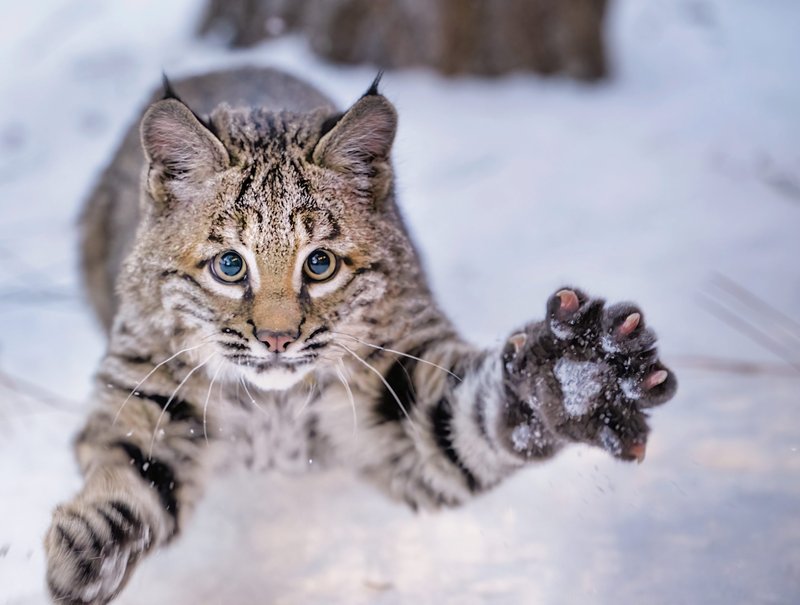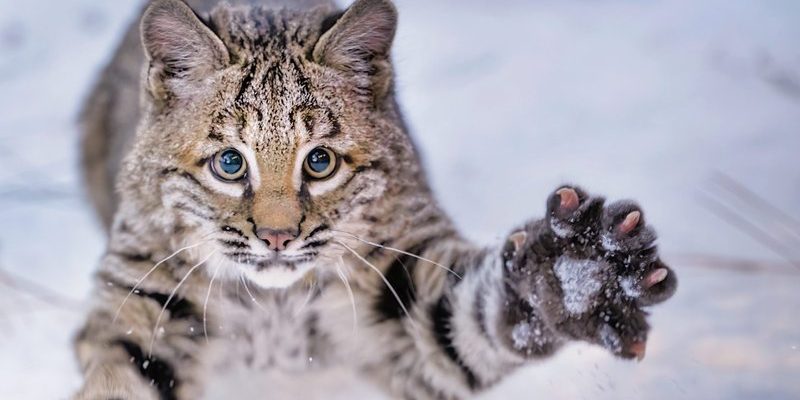
In many ways, the bobcat symbolizes independence and adaptability. It can thrive in different environments, just like how stories can evolve over time. Whether scuttling through the underbrush or prowling through the pages of a legend, bobcats are fascinating creatures that offer rich insights into human culture. So, let’s dive into how these elusive animals are portrayed in folklore and culture, discovering what they mean to different societies and why they continue to capture our imaginations.
Bobcats in Native American Folklore
Many Native American tribes have woven the bobcat into their stories and beliefs, often seeing it as a powerful and mystical creature. In some cultures, the bobcat is viewed as a symbol of stealth and cunning, traits that are admired in various narratives. Stories may feature the bobcat as a guardian spirit or a trickster, guiding individuals through challenges with wisdom or cleverness.
For instance, among the Cherokee tribe, the bobcat is often linked with hunting and survival. The bobcat’s ability to adapt to different terrains reflects the resilience and resourcefulness that the Cherokee value. They believe that incorporating the bobcat’s traits into their lives can lead to better decision-making and success in their endeavors.
Another example is the Plains tribes, which see the bobcat as a fierce protector of the land. In their stories, these cats are seen as guardians, ensuring balance in nature, much like how humans strive to maintain harmony in their communities. This perspective highlights the deep connection between the bobcat and the natural world, illustrating how intertwined animals and human culture truly are.
The Bobcat in Literature
You might be surprised to learn that the bobcat has also made its way into various pieces of literature. From poetry to children’s books, these creatures often symbolize various themes like freedom, solitude, and the wild spirit of nature. One famous example is in the poem “The Bobcat” by the poet David Citino. Through vivid imagery, Citino illustrates the bobcat as a creature of grace and mystery, inviting readers to contemplate the wildness that exists within each of us.
In children’s literature, stories often portray the bobcat as a wise and adventurous character, exploring themes of courage and self-discovery. This representation helps connect young readers to nature and instills a sense of curiosity about wildlife. It opens the door for discussions about conservation and the importance of respecting the environment.
The versatility of the bobcat in literature reflects our ongoing fascination with wildlife. It serves as a metaphor for inner strength and the untamed spirit, reminding us of the wildness that exists not just in nature but within ourselves.
Bobcats in Modern Media
In today’s world, bobcats frequently appear in films, TV shows, and even video games. Their mystique and fierce nature make them popular characters in various narratives. For example, animated films sometimes feature bobcats as side characters or heroes, showcasing their agility and cleverness. These portrayals often romanticize the bobcat, highlighting its beauty and strength while featuring themes of adventure and perseverance.
In video games, you may encounter bobcats in wilderness settings, providing players with the chance to explore habitats and learn more about wildlife. This representation fosters an appreciation for nature and encourages players to think about the role these animals play in the ecosystem.
Moreover, with the rise of wildlife documentaries, bobcats have gained a more prominent role, showcasing their behaviors in the wild. These documentaries often aim to educate viewers about conservation and the importance of protecting such remarkable creatures. In many ways, these modern media representations serve as a bridge connecting people to the natural world, inspiring action and awareness.
Cultural Symbolism of the Bobcat
The bobcat’s symbolism varies widely across cultures, reflecting different values and beliefs. In some Native American traditions, the bobcat is seen as a guide, representing intuition and inner wisdom. Many cultures also associate the bobcat with independence, often connecting it to the notion of self-reliance.
In Western cultures, the bobcat has become a symbol of stealth and adaptability. Just as it can sneak through the thickest brush without making a sound, many people aspire to navigate life’s challenges with the same level of grace and strategy. This connection to adaptability can resonate deeply, especially in a world where change is constant.
In heraldry, the bobcat has also found its place as a symbol of bravery and fierce loyalty. Many organizations or teams might adopt the bobcat as a mascot, reflecting attributes like strength and resilience. This use of the bobcat underscores the animal’s universal appeal and the traits people admire and strive for in their own lives.
Bobcats in Art and Craft
Artistic representations of bobcats can be found in various forms, from paintings and sculptures to textiles and fabric designs. Many artists draw inspiration from the bobcat’s beauty and agility, capturing its essence in ways that resonate with viewers. In indigenous art, for instance, bobcats often appear in traditional motifs, symbolizing strength and connection to nature.
Crafts that celebrate bobcats also exist, often using materials like wood or clay to create sculptures that highlight their graceful stance and fierce expressions. These crafts tell stories, reminding us of the bobcat’s role in the ecosystem and the deep respect many cultures hold for wildlife.
By showcasing the bobcat in art, creators not only express their admiration for this creature but also help raise awareness about its habitat and conservation efforts. Each piece of art can spark conversations about wildlife, nature, and the importance of protecting our planet’s treasures.
Conservation and Bobcats Today
As we delve into the bobcat’s cultural significance, it’s essential to recognize the challenges they face today. Habitat loss, hunting, and climate change threaten their populations, prompting conservation efforts in many regions. Communities worldwide are working to protect these charming felines, understanding that their survival is tied to the health of ecosystems.
Organizations are raising awareness about the importance of preserving habitats and the role bobcats play in maintaining the balance of nature. By educating people about the significance of these animals, we foster a culture of respect and responsibility toward wildlife.
Volunteering for conservation projects or simply spreading knowledge about bobcats can make a meaningful impact. Every effort counts, and understanding the cultural importance of the bobcat can inspire others to join the cause.
The bobcat is more than just an animal lurking in the woods; it is a powerful symbol woven into the fabric of culture and folklore across the globe. From Native American stories to modern media, its representations invite us to reflect on independence, adaptability, and our connection to nature.
As we recognize its role in art, literature, and storytelling, we’re reminded of how important it is to protect these incredible creatures and their habitats. Just like the bobcat’s quiet strength, we too can embody resilience and make a positive impact in our world. So the next time you hear a story about a bobcat, think about its multifaceted influence and the lessons it can teach us about living harmoniously with nature.

